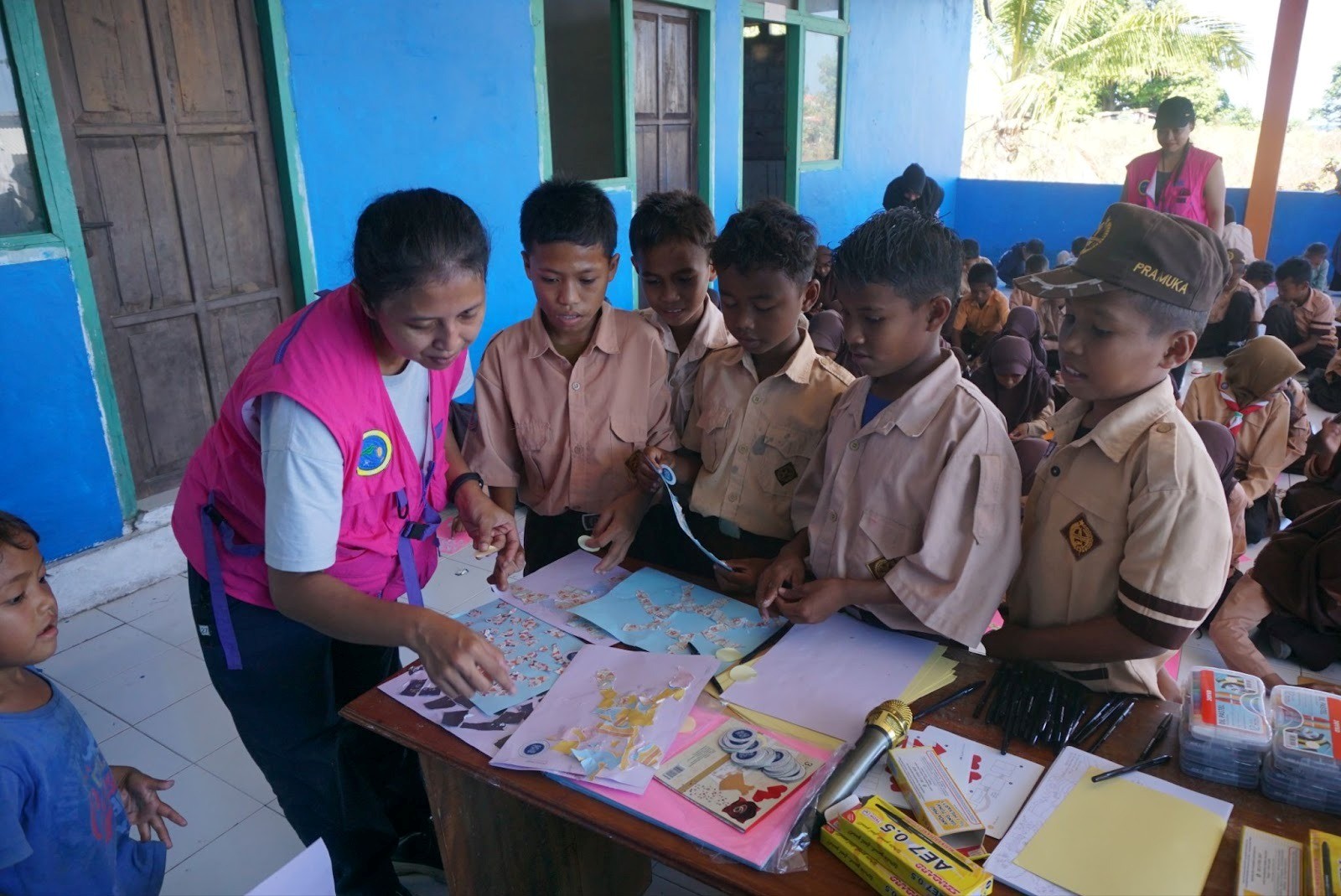ITB AAPG SC Conducts Field Work in Rajamandala
By Adi Permana
Editor Adi Permana

BANDUNG, itb.ac.id—The ITB American Association of Petroleum Geologists Student Chapter (AAPG SC) is a forum managed by geological engineering students for those who are interested in oil and gas geology. On Sunday (30/4/2023), ITB AAPG SC held a field work at Rajamandala, West Bandung.
"Under the supervision of the Professional Affairs division, our class was temporarily relocated to Rajamandala. Some outcrops can limestone as potential reservoir rocks, and geologists need to know their characteristics to see their potential petroleum system elements," Ardelia Tifani (GL 20) described.
Besides members of ITB AAPG SC, other students from the Stratigraphy Analysis course and Sedimentology & Stratigraphy practicum assistants joined the field work. It resulted in a total of 46 participants. The activity was guided by two ITB Geological Engineering lecturers, Dr. Dwiharso Nugroho, S.T., M.T., and Wahyu Probo Ananto, S.T., M.T.
Participants visited three locations during the fieldwork: Mount Hawu, Citatah, and Stone Garden. There are biogenic limestone outcrops with the size around 4x3x3 M on Mount Hawu.
"According to Mr. Nugroho, Rajamandala used to be an isolated carbonate platform. Its formation is composed of 13 different facies. One of them is deep-sea facies shown by a platy coral fossil. Paleokarst was also found at the same location," Tifani explained. Facies are the physical appearance of rocks that have significant differences.
At Citatah, Dr. Nugroho elaborated that most giant oil field reservoirs worldwide are carbonated rocks. Unfortunately, its study and exploration is still a less popular option in Indonesia.
On the other hand, Stone Garden has clastic limestone outcrops whose deposition mechanism consists of bottom traction, suspension, and gravity mass flow (GMF). The GMF mechanism is indicated by the presence of scour marks oriented on the side of the outcrop. The outcrop is composed of thin layers that are subsequently deposited in thicker layers repeatedly. "These thin layers are precipitate of the turbidite mechanism, while the thick layers are precipitate of the debrite mechanism," Tifani added.

Through this fieldwork, students can realize the mechanism of formation and deposition of carbonate rocks. In addition, they can understand the outcrops formation of Rajamandala. "This excursion can inspire others to advance the petroleum system in Indonesia, especially with its great potential in the study. Moreover, Rajamandala is one of the blueprints of several well-known companies, such as Pertamina and ExxonMobil, to learn about outcrops," Rifki Ilsani (GL 20) said.
Although various tools are now available, Dr. Nugroho hopes the sense of geologist is addressed. "Field activities are very important so that prospective geologists can continue to hone their understanding and ability to interpret existing geological features.”
Reporter: Maharani Rachmawati Purnomo (Oceanography, 2020)
Translator: Ruth Nathania (Environmental Engineering, 2019)

.jpg)
.jpg)


.jpg)

